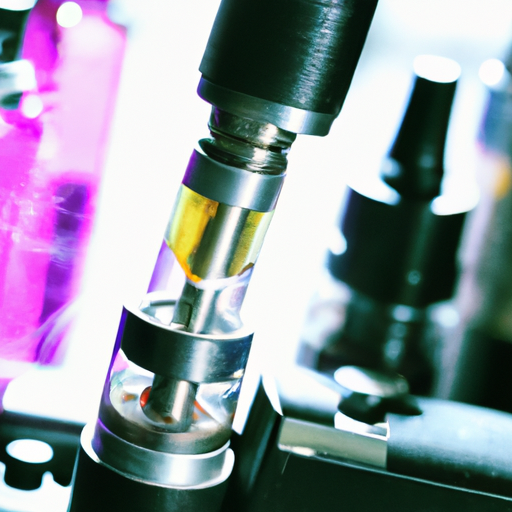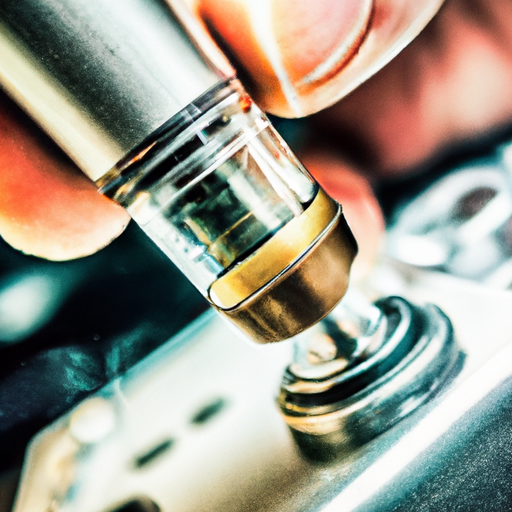No products in the cart.
No products in the cart.
In the realm of modern smoking alternatives, vape pens have taken the world by storm. With their sleek designs and discreet nature, these compact devices have become a popular choice among smokers looking for a cleaner and more convenient way to satisfy their nicotine cravings. But have you ever wondered what exactly goes on inside these fascinating gadgets? Prepare to have the inner workings of vape pens unveiled before your eyes.
In this article, we will explore the intricate mechanics that power these revolutionary devices, shedding light on the fascinating world of vape pen technology. From the heating elements to the batteries, we will delve into each component, unraveling the secrets of how these pens deliver that satisfying vaporized experience. So, join us as we embark on an adventure to understand the inner workings of vape pens, demystifying the magic behind this rising trend in smoking alternatives.
Welcome to the world of vape pens! In this article, we will delve into the inner workings of vape pens and provide you with a comprehensive understanding of these popular devices. Whether you are new to vaping or a seasoned enthusiast, understanding the components and functions of vape pens will enhance your vaping experience. So, let’s get started!
Vape pens, sometimes referred to as vaporizers, are handheld electronic devices used to inhale vaporized substances, typically containing nicotine or cannabis. They are designed to replicate the action and sensation of smoking without the combustion and harmful chemicals associated with traditional cigarettes. Vape pens offer a discrete and convenient way to enjoy the pleasures of vaping.
Vape pens come in various shapes, sizes, and designs to cater to the diverse needs and preferences of vapers. The most common types of vape pens include:

To understand how vape pens work, it is essential to familiarize yourself with their key components. Vape pens typically consist of four main parts:
The battery is the power source of the vape pen and provides the energy necessary to heat the coil and vaporize the e-liquid or oil. Vape pen batteries come in various sizes and capacities, ranging from small internal batteries to larger external batteries. The battery is crucial for determining the overall performance and longevity of the device.
The atomizer is the heating element responsible for converting the e-liquid or oil into vapor. It contains a coil, which heats up when the device is activated, and a wick that absorbs the e-liquid or oil. The atomizer is a vital component that directly affects the flavor, vapor production, and overall vaping experience.
The tank or cartridge holds the e-liquid or oil and connects to the atomizer. In refillable vape pens, the tank is detachable and can be refilled with the desired substance. Disposable vape pens often come with pre-filled cartridges that cannot be refilled. The tank or cartridge’s capacity and material can vary, affecting the amount of e-liquid or oil that can be held and the overall durability of the device.
The mouthpiece is the part of the vape pen from which you inhale the vapor. It is usually located at the top of the device and can vary in design and functionality. The mouthpiece plays a crucial role in the overall vaping experience, affecting airflow, comfort, and ease of use.
Vape pens commonly use two types of batteries: internal and external. Internal batteries are built-in and cannot be removed, while external batteries are removable and require separate charging. Internal batteries provide convenience and portability, while external batteries allow for longer vaping sessions as they can be swapped out when depleted.
The capacity of a vape pen battery is measured in milliampere-hours (mAh) and determines how long the device can last before requiring a recharge. Higher mAh ratings generally indicate longer battery life. Additionally, vape pen batteries may provide different voltage outputs, with variable voltage devices allowing users to adjust the power level to their desired preference.
Vape pens can be charged through various methods, including USB charging, wall adapters, and car chargers. USB charging is the most common method, offering convenience and compatibility with various charging sources. Some vape pens also come with pass-through charging, allowing you to use the device while it is being charged.

The atomizer is the core component responsible for heating the e-liquid or oil and producing vapor. When the vape pen is activated, the battery provides power to the atomizer, causing the coil to heat up. This heat then transfers to the e-liquid or oil on the wick, vaporizing it for inhalation.
Vape pens utilize different types of heating elements, including:
The coil material used in the atomizer determines its resistance, which affects the overall vaping experience. Lower resistance coils (sub-ohm) produce more vapor and intense flavor, while higher resistance coils provide a smoother and cooler vape. The choice of coil resistance depends on personal preference and the desired vaping style.
The tank or cartridge holds the e-liquid or oil and feeds it to the atomizer. It serves as a reservoir, ensuring a constant supply of liquid for vaporization. The tank or cartridge is a crucial part of the vape pen, dictating the capacity, refilling method, and compatibility with different e-liquid or oil formulations.
Vape pens may feature various tank designs, such as top-fill, bottom-fill, and side-fill. Top-fill tanks offer convenient refilling by removing the top cap, bottom-fill tanks require disassembling the entire device, and side-fill tanks employ a port located on the side. Each design has its pros and cons, so choose one that suits your preferences and ease of use.
The tank or cartridge capacity determines how much e-liquid or oil can be held at once. Capacities can range from 1ml to 5ml or more, depending on the vape pen’s size and design. The material of the tank or cartridge can vary as well, with common options being glass, plastic, or stainless steel. Glass tanks, for example, offer better flavor preservation but may be more prone to breakage.
Refillable tanks require periodic refilling, typically by unscrewing the top or bottom section and adding the desired e-liquid or oil. It is essential to avoid overfilling to prevent leakage and ensure proper wicking. Regular maintenance, such as cleaning the tank and replacing the coil when necessary, helps maintain optimal performance and extends the lifespan of the vape pen.
The mouthpiece is the part of the vape pen that connects to the tank or cartridge and allows you to inhale the vapor. It can vary in design, ranging from narrow mouthpieces for a tight draw to wider mouthpieces for increased airflow. The shape and size of the mouthpiece greatly influence the overall feel and comfort of vaping.
Mouthpieces are often made from materials such as plastic, metal, or silicone. Plastic mouthpieces offer affordability and ease of cleaning, while metal mouthpieces add durability and aesthetic appeal. Silicone mouthpieces provide a soft and comfortable feel, minimizing any potential discomfort during extended vaping sessions.
Vapers can personalize their vaping experience by customizing the mouthpiece. Many vape pens offer interchangeable mouthpieces in different colors, shapes, and materials. This allows users to customize the appearance and feel of their device, adding a touch of personal style to their vaping experience.
Understanding the basics of how vape pens work can demystify their inner workings, enabling you to enjoy a more informed and satisfying vaping experience.
Vape pens can be activated through various methods, depending on the device’s design. Button-activated pens require the user to press a designated button to complete the circuit, activating the heating process. On the other hand, draw-activated pens are triggered by inhaling from the mouthpiece, automatically activating the device as you take a puff.
When activated, power flows from the battery to the heating element, commonly referred to as the coil. The coil heats up, vaporizing the e-liquid or oil absorbed by the wick. This process is enabled by the circuitry within the vape pen, which completes the electrical connection between the battery and the atomizer.
Some vape pens offer temperature control features, allowing users to adjust the level of heat produced by the coil. Temperature control prevents overheating and ensures a consistent vape. Advanced vape pens provide various temperature settings, catering to different e-liquid or oil formulations and personal preferences for flavor and vapor production.
Now that you understand the various components and functionality of vape pens, let’s explore the vaping process itself.
For refillable vape pens, the first step is filling the tank or cartridge with your preferred e-liquid or oil. Follow the manufacturer’s instructions to avoid overfilling or spillage. It is essential to choose high-quality e-liquids and oils that are compatible with your vape pen for the best possible vaping experience.
Before your first vape or when replacing the coil, it is necessary to prime the coil, ensuring proper saturation of the wick. This involves adding a few drops of e-liquid or oil directly onto the coil and letting it soak for a few minutes. Priming prevents dry hits, unpleasant tastes, and coil burnout.
Once the vape pen is filled and the coil primed, you are ready to take your first hit. Press the activation button (if applicable) or simply inhale from the mouthpiece to trigger the device. Start with gentle, slow draws to acclimate to the vapor and gradually increase the intensity to suit your preference.
As you inhale, the power from the battery flows to the atomizer, heating the coil and vaporizing the e-liquid or oil. The heat generates vapor, which travels up through the tank or cartridge and out through the mouthpiece. The resulting vapor is inhaled into your lungs, providing the desired nicotine or cannabis experience.
Congratulations! You are now well-versed in the inner workings of vape pens. From the battery to the atomizer, tank, mouthpiece, and everything in between, you have gained a comprehensive understanding of how these devices function. Armed with this knowledge, you can confidently explore the world of vaping, customize your experience, and enjoy the myriad flavors and sensations that vape pens have to offer. Remember to choose reputable brands, prioritize safety, and always vape responsibly. Happy vaping!